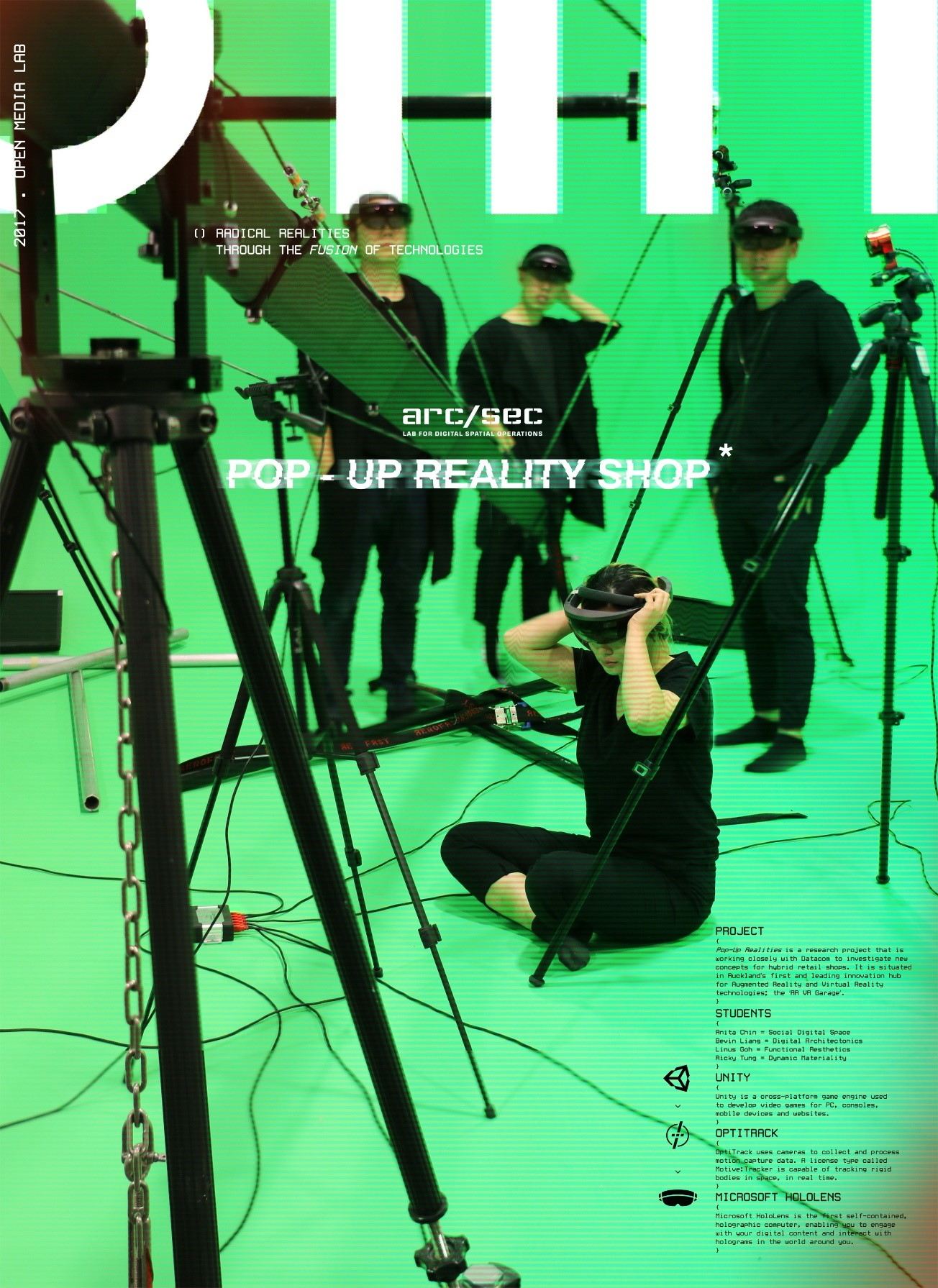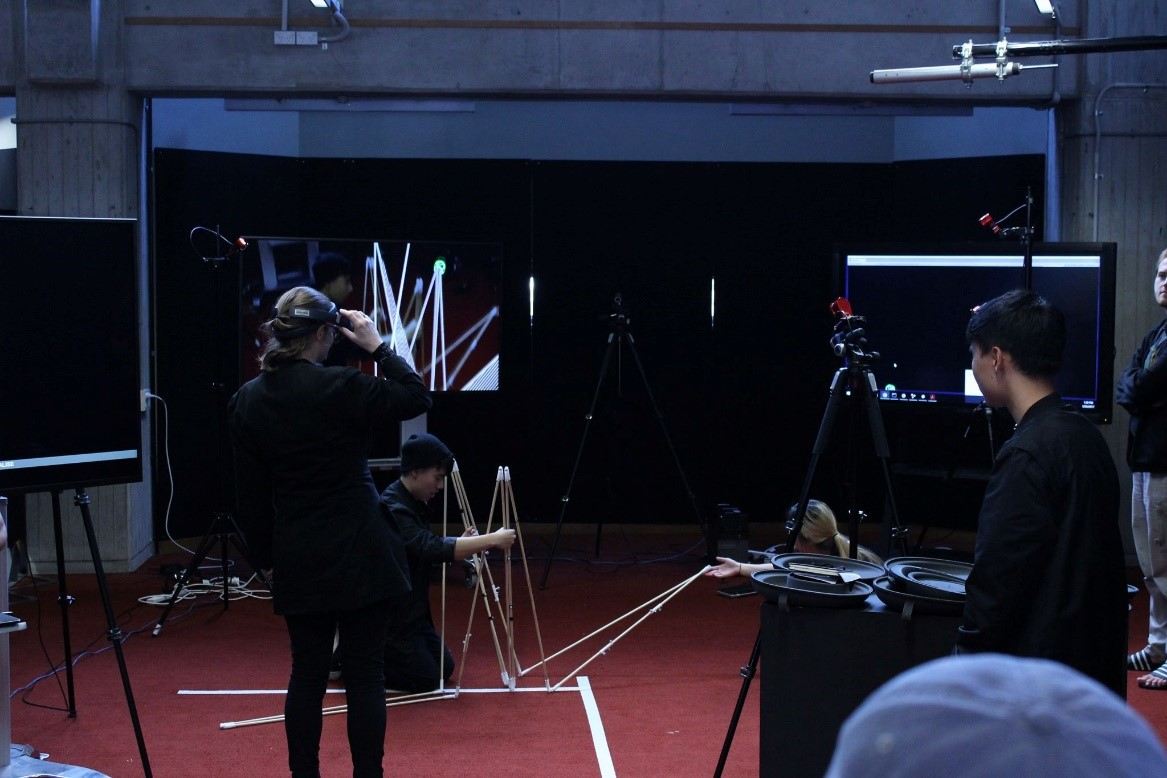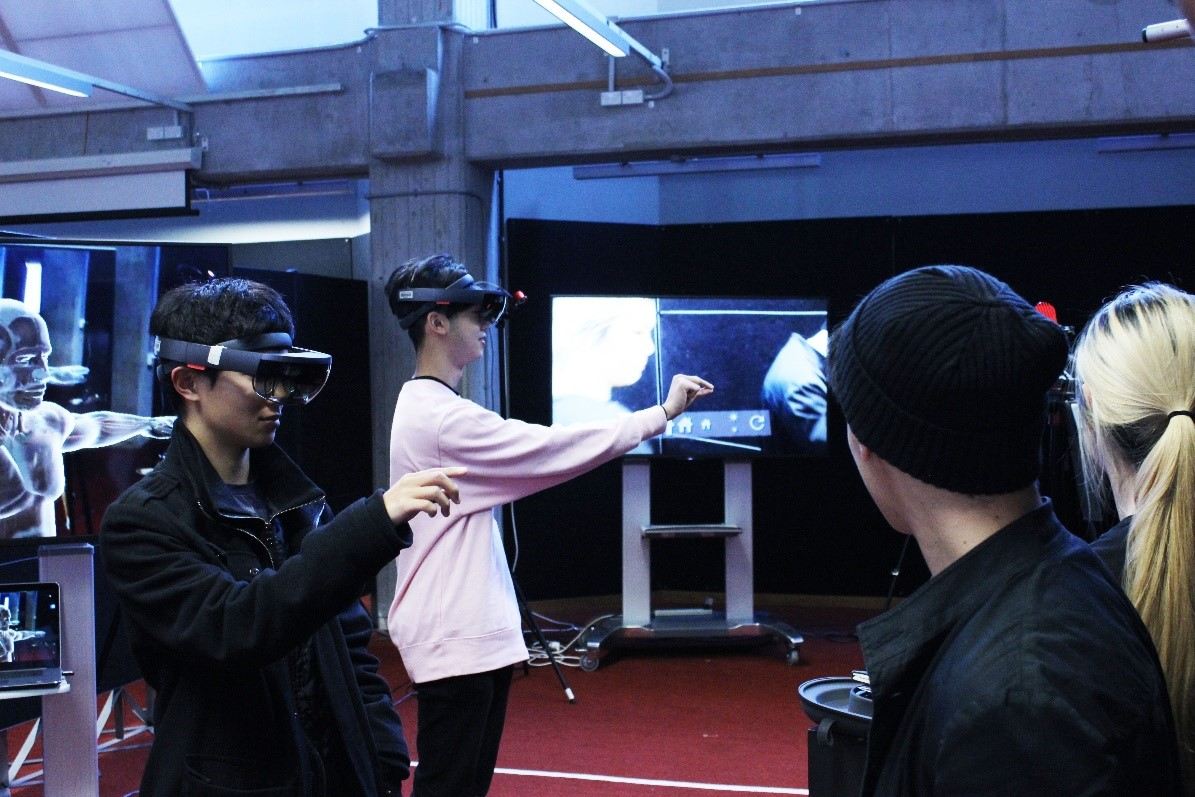
Disposition of Microsoft HoloLenses for a Pop-Up Reality Shop to demonstrate the progress of a research project
Associate Professor Uwe Rieger, School of Architecture and Planning.
The research team is working closely with Datacom NZ on new hybrid retail concepts, combining physical and online shopping. The project is embedded in the research at the Lab for Digital Spatial Operations [arc/sec] at the University of Auckland.
A team of four Architectural postgraduate students, Anita Chin, Linus Goh, Ricky Tung and Bevin Liang are working on a one-year project to investigate how we can merge physical properties with digital information to form a responsive architecture. The team looks to utilise AR headset tools to actively link physical touchable matter with digital materiality, to create a unique user experience in a haptic digital space.
Application
These devices allow us to simultaneously reinvent and reimagine the future of interactive space, going beyond our traditional understanding of both architecture and technology, towards a collaborative and experimental mode of practice.
The research direction for Pop-Up Reality Shop is to test new tangible interactions and conditions that could occur within the context of a retail experience.
This is executed by the use of a physical structure that is designed to be flexible and becomes a framework that acts as an external input device to control and instruct our digital designs with the utilisation of the augmented reality headset HoloLens.


The Pop-up Reality Shop is situated in Auckland’s first and leading innovation hub for augmented reality and virtual reality technologies; the ‘AR VR Garage’.
Microsoft HoloLens
The HoloLens and its initial development kit has been a pivotal technological tool for this investigation. The HoloLens will be used in conjunction with other existing tools such as Optitrack Motion Capture and Unity3D in order to create performative physical environments that embody programmable virtual characteristics. It is the flexible and highly manoeuvrable nature of the HoloLens which makes it a great asset for Pop-up Realities; being able to experience a space untethered from a computer makes the architectural experience much more seamless, immersive and naturalised. Looking ahead, the arc/sec Lab will explore the use of two HoloLenses for extended streaming purposes as well as improved user interaction between multiple users. Thanks for the advice and technology demonstration by the specialist from the Centre for eResearch which proven to be highly valuable for the progress of the project. We expect to show first results at the ACADIA Conference at MIT in Boston in November 2017.

See more case study projects

Our Voices: using innovative techniques to collect, analyse and amplify the lived experiences of young people in Aotearoa

Painting the brain: multiplexed tissue labelling of human brain tissue to facilitate discoveries in neuroanatomy

Detecting anomalous matches in professional sports: a novel approach using advanced anomaly detection techniques

Benefits of linking routine medical records to the GUiNZ longitudinal birth cohort: Childhood injury predictors

Using a virtual machine-based machine learning algorithm to obtain comprehensive behavioural information in an in vivo Alzheimer’s disease model

Mapping livability: the “15-minute city” concept for car-dependent districts in Auckland, New Zealand

Travelling Heads – Measuring Reproducibility and Repeatability of Magnetic Resonance Imaging in Dementia

Novel Subject-Specific Method of Visualising Group Differences from Multiple DTI Metrics without Averaging

Re-assess urban spaces under COVID-19 impact: sensing Auckland social ‘hotspots’ with mobile location data

Aotearoa New Zealand’s changing coastline – Resilience to Nature’s Challenges (National Science Challenge)

Proteins under a computational microscope: designing in-silico strategies to understand and develop molecular functionalities in Life Sciences and Engineering

Coastal image classification and nalysis based on convolutional neural betworks and pattern recognition

Determinants of translation efficiency in the evolutionarily-divergent protist Trichomonas vaginalis

Measuring impact of entrepreneurship activities on students’ mindset, capabilities and entrepreneurial intentions

Using Zebra Finch data and deep learning classification to identify individual bird calls from audio recordings

Automated measurement of intracranial cerebrospinal fluid volume and outcome after endovascular thrombectomy for ischemic stroke

Using simple models to explore complex dynamics: A case study of macomona liliana (wedge-shell) and nutrient variations

Fully coupled thermo-hydro-mechanical modelling of permeability enhancement by the finite element method

Modelling dual reflux pressure swing adsorption (DR-PSA) units for gas separation in natural gas processing

Molecular phylogenetics uses genetic data to reconstruct the evolutionary history of individuals, populations or species

Wandering around the molecular landscape: embracing virtual reality as a research showcasing outreach and teaching tool
























































































































































